Case Studies.
Add Case Study
Our Case Study database tracks 22,657 case studies in the global enterprise technology ecosystem.
Filters allow you to explore case studies quickly and efficiently.
Download Excel
Filters
-
(6,653)
- (2,601)
- (2,127)
- (945)
- View all
-
(5,642)
- (2,469)
- (1,692)
- (826)
- View all
-
(5,571)
- (2,178)
- (1,766)
- (643)
- View all
-
(5,247)
- (2,179)
- (1,715)
- (1,321)
- View all
-
(2,881)
- (1,448)
- (574)
- (376)
- View all
- View all 15 Technologies
- (1,985)
- (1,985)
- (1,915)
- (1,679)
- (1,629)
- View all 42 Industries
- (8,728)
- (4,742)
- (3,618)
- (3,233)
- (2,947)
- View all 13 Functional Areas
- (3,304)
- (2,787)
- (2,603)
- (2,006)
- (1,630)
- View all 129 Use Cases
- (13,581)
- (5,296)
- (4,272)
- (3,520)
- (2,856)
- View all 9 Services
- (504)
- (432)
- (416)
- (382)
- (301)
- View all 1083 Suppliers
Selected Filters
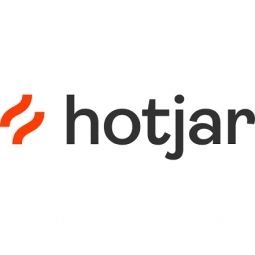
|
Boosting Conversions by 43%: A Case Study on Re:member's Use of IoT
Steffen Quistgaard, a Senior Marketing Specialist at re:member, a trademark of Entercard, one of Scandinavia’s leading credit market companies, noticed an unusual increase in users bouncing off re:member’s credit card application form. Despite having traditional analytics tools like Google Analytics and their custom data warehouse, these tools were not providing a complete picture of the user journey. The main challenge was that these tools could not visually show what went wrong. The issue was particularly noticeable with traffic arriving from affiliates, which are sites that compare different types of credit cards. Despite being a significant traffic source for re:member, the high bounce rate from these users was a concern. Google Analytics could show what was happening on re:member’s application form, but it couldn’t explain why affiliate traffic was bouncing.
|
|
|

|
Turum-burum's Use of Behavior Analytics to Boost Ecommerce Conversion Rates
Intertop, a well-established shoe retailer in Ukraine with 114 stores in 25 cities and an online operation that attracts 3.5 million monthly visits, was facing challenges with its ecommerce model. Despite its high growth and rapidly increasing traffic, the company was struggling to simplify the customer journey on its website, increase conversion rates, speed up the introduction of user experience changes, and mitigate risks of damaging the site experience. To address these issues, Intertop engaged CRO and UX agency Turum-burum. The agency initiated their Conversion Rate Optimization program based on step-by-step interface enhancements, a model they call ESR: Evolutionary Site Redesign. The goal was to anchor all proposed website changes on analytical proof and confirm them through A/B testing, a proven way of minimizing risk of rolling out changes that impact the shopping experience.
|
|
|

|
Vimcar's Successful Website Rebranding: Boosting Traffic and Leads with Hotjar
Vimcar, Germany’s leading fleet management software, was experiencing rapid growth and needed to rebrand their regional websites for Germany and the UK to keep up with their expanding product and feature list. However, they were concerned that the changes might disrupt their funnels, leading to a temporary reduction in page views, leads, and sales. The site’s heavy focus on product and features was suspected to be making it harder for users to book a demo and get started. The team wanted to make the experience more customer-centric but needed hard data to identify what elements to change. The slow pace of traffic from its B2B customers made A/B testing a slow process, taking up to three months to gather enough data to act. They needed solutions in place right away.
|
|
|

|
Leveraging Hotjar for Conversion Optimization: A Case Study on Yatter
Gavin, the founder of Yatter, a lead generation agency, faced several challenges in improving the conversion rates of various websites. One of the main issues was with his personal site, myfunnelacademy.com, where after switching from Clickfunnels to WordPress for more flexibility, the conversions dropped significantly. Another challenge was with an ecommerce store for car parts. Despite the Facebook ads for the store generating a 5x ROI, Gavin suspected the landing page was not fully optimized. He also worked on a stem cell therapy website, where despite having high-value visitors, the conversion rate was low. Lastly, he faced a challenge with a personal training and nutrition planning website, faultlessfitness.com, where too many options were causing choice paralysis.
|
|
|
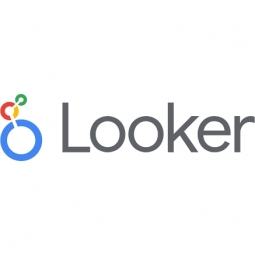
|
Algoan: Revolutionizing Lending Processes with Machine Learning and Google Cloud
Credit is a vital component of any financial system. However, for banks and other financial institutions, making credit available to those who need it can be a complex process. The credit scoring models used by financial companies often fail to reflect the actual financial behavior of individuals. In France, banks and lenders often base their lending decisions on outdated socioeconomic factors, such as marital status, which may not accurately represent the financial stability of a customer. Algoan, a fintech startup, aimed to make credit scores more transparent and representative of the applicants’ actual financial behavior rather than demographic signifiers. Launched in 2018, Algoan sought to provide financial institutions with a digital platform designed to improve their lending decisions by making them faster and more relevant to the circumstances of each customer. However, to achieve this, Algoan needed an infrastructure that balanced power, stability, and security.
|
|
|

|
AppsFlyer: Leveraging Real-Time Data for Mobile App Marketing Analytics
AppsFlyer, a leading mobile attribution and marketing analytics platform, was faced with the challenge of providing real-time access to raw datasets for over 100,000 users. The platform, which processes more than 80 billion events daily, was experiencing a 10% monthly growth in traffic. This rapid growth necessitated a service that could scale to match the exceptional demand. Additionally, AppsFlyer's internal teams required access to the raw data for analytics to inform various aspects such as product performance and research and development. The company needed a data warehouse that could scale quickly while providing real-time access to data with high availability.
|
|
|

|
Apxor: Enhancing User Experiences with Data-Driven Insights
Apxor, a company that helps mobile app companies grow and retain subscribers, was facing challenges with its existing cloud provider. The company needed to process 1.5 billion data points daily to help its clients develop personalized user experiences. However, the infrastructure of their previous cloud provider was causing deployment issues. Additionally, the company was struggling with managing its infrastructure, which was taking away valuable time from its DevOps team that could have been used to focus on new product road maps. Apxor also needed to improve app discoverability and user retention for its clients, as users typically decide within 30 to 60 seconds whether they want to keep an app.
|
|
|

|
Ascend Money: Leveraging Google Cloud and Google Workspace for Cost Reduction and Improved Collaboration
Ascend Money, one of South East Asia's largest fintech businesses, was facing challenges as it expanded its customer base and ventured into new markets. The company initially operated using physical infrastructure and on-premises workforce productivity applications. However, as the business grew, its technology leaders began to explore options to improve value for money, reduce the maintenance load on in-house team members, enhance data management and analysis, and foster more effective collaboration. The company was also looking for ways to reduce its infrastructure spending and become more efficient and cost-effective. Ascend Money needed a solution that would allow it to optimize its operations, lower costs, and improve performance.
|
|
|

|
UCSF Breast Care Center: Enhancing Healthcare Research with Digital Engagement Platform
The Athena Breast Health Network, a collaboration of breast cancer experts, healthcare providers, researchers, and patient advocates, was conducting the WISDOM Study, a clinical trial comparing personalized breast cancer screening to standard annual screening in 100,000 women. The study aimed to determine whether personalized screening that incorporates individual risk assessments is as safe and effective as the standard approach. However, the team faced a challenge in securely and conveniently providing access to mammograms and other breast health information. Additionally, they needed to improve study recruitment and retention, as the process of requesting records by phone or mail was inconvenient for participants.
|
|
|
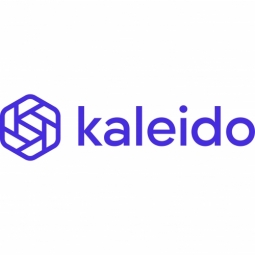
|
RiskStream Collaborative's Successful Testing of Blockchain-Based Loss Data Exchange
The Institutes RiskStream Collaborative™, a large enterprise-level blockchain consortium in the risk management and insurance industry, faced a challenge with the carrier to carrier data sharing of a first notice of loss (FNOL). This process was resource-intensive and time-consuming, leading to increased claims cycle time and handling costs. The consortium needed a solution that would facilitate early and accurate notice of loss data exchange between the relevant carriers’ claims systems. The solution had to be intuitive, easily blend into existing business processes and environments, and run on a platform that could be set up quickly and easily updated. It also needed to allow users to create, update, and match loss records with another network participant in a permissioned manner, privately sharing information and reducing data reconciliation issues between disparate data systems.
|
|
|
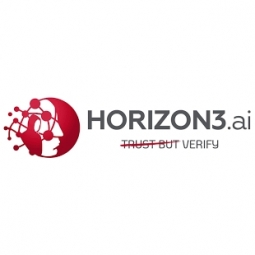
|
Maximizing Security with Minimum Effort: A Case Study on Horizon3.ai and NodeZero
The IT technical champion at a global manufacturing company was aware of the organization's security vulnerabilities despite having no existing compliance issues. The team was limited by budget constraints, only able to afford one penetration test per year. This was a significant challenge as the company's attack surface was expanding due to their growing IoT footprint. The organization needed a solution that could identify and address these vulnerabilities effectively and efficiently, without requiring significant resources or disrupting their operations.
|
|
|

|
Overcoming Misreporting Tools: A Case Study on Patch Management in a Teaching Hospital
A teaching hospital, despite having a diligent IT team that tracked security updates and promptly patched critical issues using industry-leading tools, found itself in a precarious situation. The team was confident that they had patched a critical vulnerability, known as ZeroLogon, months earlier. They even had reports from Qualys and Microsoft DISM, both industry-leading tools, to back up their claim. However, when NodeZero exploited this supposedly patched vulnerability in under a day on several of their Active Directory domain controllers, the IT team insisted it was a false positive. NodeZero, on the other hand, had evidence of a detailed attack chain showing each step taken to get credentials, escalate privileges, and gain administrative rights to Active Directory. This discrepancy led to the hospital reapplying the patch and repeating the NodeZero autonomous pen test.
|
|
|
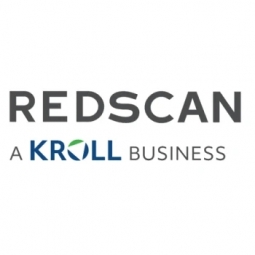
|
Enhancing Cybersecurity for a National Homebuilder with Redscan
The national homebuilder, with a large and mobile IT estate, was a potential target for cybercriminals due to its dispersed workforce and heavy reliance on cloud services. The company was not consistently capturing, analyzing, and correlating security logs, leaving it vulnerable to attacks without any visibility. There were also concerns about the company's compliance with GDPR and PCI DSS requirements. The company needed a security capability that would enable it to monitor and protect important data and assets round the clock. However, with a small team, the company lacked the resources to build this capability in-house and needed a security partner to provide support and expertise.
|
|
|

|
Leveraging EDR to Combat Advanced Malware Threats in Healthcare
A private healthcare organisation in the UK, which processes large volumes of sensitive patient data, was targeted by a sophisticated type of malware. The malware aimed to harvest employee credentials and exfiltrate data. The organisation was already using Redscan’s Managed Endpoint Detection and Response service to protect its data beyond the level of security offered by traditional perimeter solutions. However, the malware attack posed a significant threat to the organisation's operations and the security of patient details. The challenge was to quickly identify, investigate, and respond to the attack to minimise operational disruption and prevent patient details from being stolen.
|
|
|
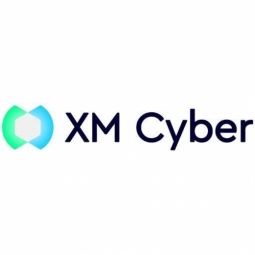
|
Kettering Health Enhances IT Security with XM Cyber Amidst COVID-19 Challenges
Kettering Health, a healthcare network supporting 13 medical centers, over 120 outpatient locations, and more than 30,000 users, was in the process of implementing layered defenses and aligning with NIST security controls when an aggressive rollout of the EPIC Electronic Health Records system fully consumed all IT resources. This resulted in a stall in cyber hygiene activities, leading to configuration drift. The situation was further exacerbated by the COVID-19 pandemic, which forced the IT staff to pivot from routine maintenance to address new security challenges presented by a mobile and remote workforce of first responders. The complexity of the situation, coupled with scarce resources, made it difficult to reestablish cyber hygiene. Limited visibility into the status of security tools, time-consuming manual analysis, and an overwhelmed IT network team further complicated the situation.
|
|
|
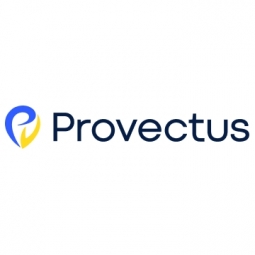
|
IMVU's Transformation: Leveraging AWS for Advanced Analytics and Machine Learning
IMVU, the world’s largest avatar-based social network, was facing challenges with its aging on-premise data platform. The company wanted to enhance and re-architect their platform to support advanced analytics and Machine Learning use cases. However, with an exponentially growing data volume and a monolithic Hadoop architecture, the IMVU team was struggling to efficiently utilize user-generated data. The existing infrastructure limited innovation and capacity for advanced analytics. IMVU’s analysts lacked the tools to rapidly generate business-critical reports on customer in-game behavior at scale. They were working with historical data in batches, which resulted in late reports, inaccurate assumptions about customer in-game purchases, slower sales, and loss of profit. The analytics team also lacked a test environment to efficiently check analytics assumptions. The platform was powered by a 90-node on-premise Hadoop cluster, which was not cost-efficient and resulted in high costs and low efficiency.
|
|
|

|
InMarket Enhances Data Platform with ML-Powered Solution for Improved Efficiency and ROI
InMarket, an omnichannel marketing platform, was grappling with an inefficient legacy data platform that was unable to handle the growing volume of real-time location data collected from multiple sources. The platform, built using 50 AWS nodes and 400 bare metal nodes managed by Apache Mesos, was processing over 5 billion events daily. However, it was plagued with delays, bottlenecks, and inefficiencies. The platform's job success rate was a mere 40%, with 60% of Apache Spark jobs being randomly aborted in the system. This led to developmental delays, inaccurate timeline projections, and a significant reduction in InMarket's ability to attract marquee brands, thereby slowing down revenue growth. The time taken to hand off a data pipeline from data scientists to data engineers and then to operations for deployment in production was estimated to be up to twelve months, which was unacceptable given InMarket's business model.
|
|
|

|
Nitrio's Transition to ML-Powered Intent Extraction for Advanced Sales Strategies
Nitrio, an AI company specializing in sales optimization, was facing significant challenges with its Natural Language Processing (NLP) platform. The platform relied heavily on manual rules and heuristics-based models, which led to bottlenecks and scalability issues, hindering Nitrio's growth. The existing platform was unable to ensure the required level of accuracy for sentiment analysis of rep-to-lead messages, resulting in a significant number of messages being outsourced to a third party for manual analysis. This not only increased service costs but also created further bottlenecks and scalability issues. The platform's infrastructure demonstrated tight coupling between services, increasing their dependencies and negatively impacting team performance, causing data quality and consistency issues. Nitrio's platform was designed to efficiently analyze inbound rep-to-lead messages to extract their intent and collect useful data about every sales representative's performance. However, the reliance on manual processes and the inability to ensure 95% certainty in message intent identification were major setbacks.
|
|
|

|
Pr3vent: Revolutionizing Newborn Eye Screening with Machine Learning
Pr3vent, a Silicon Valley-based diagnostic company, was faced with the challenge of improving patient diagnosis and eye screening availability through computer-aided diagnosis. The company aimed to scale doctors’ expertise through AI, with the goal of reducing the per-screen cost for better accessibility to 4M infants in the US alone while increasing diagnosis accuracy. The challenge was to utilize the power of AI to combat preventable vision loss in infants. Due to the scarcity of trained doctors who can diagnose eye diseases by a newborn’s retina, the team’s vision was to marry Deep Learning and data to scale the expertise of ophthalmologists who can, to cut per-screen cost, increase accuracy, and improve screening availability. The solution needed to be highly accurate in detecting pathology in a newborn’s retina, to receive FDA approval. This required Pr3vent to accurately label a database of 350K fundus and retina images by a team of experienced ophthalmologists, build an AI-driven image analysis and anomaly detection engine, and develop an application for ophthalmologists to handle retina images.
|
|
|

|
Secure Data Infrastructure for Microbiome Research: A Case Study on Second Genome
Second Genome, a biotechnology company, was seeking to accelerate and scale its microbiome drug discovery and development. The company wanted to improve data ingestion and staging, and refine the codebase of its data platform. Operating in a highly regulated pharmaceutical industry, Second Genome needed to enhance data security compliance to create a safe drug research and development environment for its clients and partners. The company was also looking to handle microbiome data more efficiently to speed up microbial research, drug trials, and discovery. As part of the healthcare industry's transformation towards personalized medicine, Second Genome was aiming to identify responder/non-responder populations and determine the optimal approach to therapy. The challenge was to enhance its data platform to make it faster, more scalable, secure, and compliant.
|
|
|
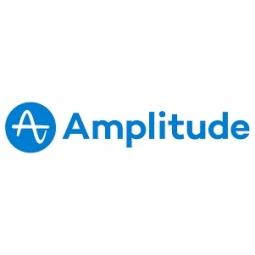
|
Centralizing User Data for Enhanced Analysis: A Case Study on AllTrails
AllTrails, a digital platform providing information on over 350,000 trails to 40 million users worldwide, faced a significant challenge in managing their data architecture. The company's analysts and engineers had developed a homegrown JSON schema library to define event collection, which was built into a custom SDK platform. However, maintaining this custom SDK generator for each platform was time-consuming and often led to delays in the collection of new analytics events. Furthermore, the GitHub repository used for this process was difficult for non-technical team members to navigate, making it challenging to ensure that it met their requirements. The company realized the need to move away from their homegrown SDK library and adopt a customer data platform (CDP) solution.
|
|
|

|
Data Democratization and Rapid Testing: How Amplitude Scales Canva
Canva, an online design and publishing platform, was facing a challenge in managing and utilizing its vast data. The company wanted to empower non-technical stakeholders with self-serve data to explore different areas as needed. They had a data warehouse, but the barriers to entry were too high for the average user. To grow Canva at scale, non-technical people needed to segment audiences and create funnels. It was difficult for product managers to dive into new releases and see how new features performed or get a breakdown of a funnel. Shortly after launch, the team realized the need for a more detailed product analytics solution.
|
|
|

|
Leveraging Self-Serve Analytics to Drive Growth: A Case Study on Kahoot!
Kahoot!, a platform for creating, sharing, and playing learning games or trivia quizzes, has experienced significant growth since its inception in 2012. With over 550,000 paying users and more than 1.5 billion participating players in 200 countries, the company faced the challenge of effectively managing and utilizing its vast product usage data. Despite having adopted Amplitude, a product intelligence platform, Kahoot! was only using a few functionalities and tracking minimal events. The company was suffering from a classic bottleneck where all data requests had to go through the data analysts. This situation was not sustainable given the company's growth and the increasing need for data-driven decision making across different departments.
|
|
|
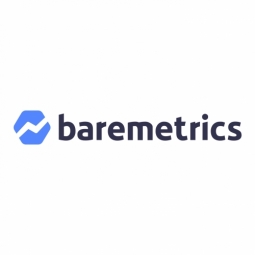
|
UXPin's Journey to Efficient SaaS Metrics Tracking with Baremetrics
UXPin, a code-based design tool company, was facing a significant challenge in consolidating and analyzing their subscription data. Initially, they used both PayLane and PayPal to process payments. However, when they moved to the United States, they were unable to migrate their Poland-based PayPal subscriber data. This was a significant issue as these customers constituted a large portion of their revenue. To address this, they decided to maintain their Polish PayPal account while also establishing a separate payment processor in the US. This decision led to the challenge of maintaining two separate payment processors and the need to consolidate and analyze data from both. UXPin built internal tools to analyze activity, but these tools required ongoing maintenance, often crashed, and did not provide the insights they needed. By October 2020, 99% of UXPin’s customers were paying via Stripe, and they needed a solution to efficiently analyze this data and support their growth.
|
|
|

|
How Blue Corona Reduced Annual Citation Spend by 79% with BrightLocal
Blue Corona, a digital marketing agency based in Maryland, specializes in helping home service companies improve their marketing performance and ROI. A significant part of their strategy involves providing clients with consistent NAP (Name, Address, Phone number) data, which is crucial for local businesses to attract local customers. They were using a popular citation provider for this purpose, which was effective but came with a significant cost issue. The team needed to migrate 155 locations from their existing citation tool, but they were concerned about the time it would take and the security of their client’s information.
|
|
|

|
How Blue Corona Reduced Annual Citation Spend by 79% with BrightLocal
Blue Corona, a digital marketing agency based in Maryland, was facing a significant challenge with their citation building process. The agency, which specializes in helping home service companies improve their marketing performance and ROI, was using a popular citation provider to provide clients with consistent NAP data. This was particularly important as their clients were local businesses needing to attract local customers. However, the cost of the citation service was prohibitively high. The high price point meant that Blue Corona was not consistently able to offer all their clients citation building services. This was in direct conflict with their goal of reducing marketing costs for their clients. The team at Blue Corona was therefore in search of a cheaper, yet equally effective alternative.
|
|
|

|
Revitalizing Local SEO: PuroClean's Journey to Saving 350 Working Hours Annually
PuroClean, a leading franchise system for emergency property damage remediation, faced a significant challenge in managing their Local SEO initiatives across their 360 franchise locations in the USA and Canada. The marketing team struggled to get all franchise locations on the same page and bought into their structured, consistent Local SEO initiatives. Being a small team, they had to commit additional time to overcome this challenge, which led to other key functions of the marketing team being neglected. They identified the need to improve their understanding and management of NAP (Name, Address, Phone number) in relation to local business listings, but lacked the time to address this. The scale and scope of the challenge were largely unknown due to the novelty of Local SEO efforts to the business.
|
|
|

|
Reviving User Conversions: A Case Study on ClassHero
John Gilmore, the Sales Operations Manager at ClassHero, a startup, was tasked with identifying opportunities for product improvement and ensuring conversions were happening as expected. However, he noticed a significant drop in the onboarding rates on the site, from 75% to 39%, a 48% drop. This was a major concern as users who didn't complete onboarding in their first session rarely returned to the app. The drop in conversions was alarming, and the cause was unknown due to recent product changes. John needed to identify the problem quickly to prevent further loss in sales. He turned to Hotjar, a tool he had installed a few months earlier, to analyze session recordings and identify the issue.
|
|
|
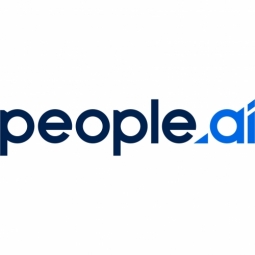
|
Boosting Sales Productivity through Data Automation: A Pluralsight Case Study
Pluralsight, a technology workforce development company, was grappling with lower growth than anticipated due to issues surrounding rep productivity. Despite having access to data on win rates and pipeline coverage, the company struggled to identify the behaviors that led to consistent, predictable revenue. Two key challenges stood in the way of Pluralsight’s growth targets: the quality of CRM data and inconsistent execution from their reps. The data in Salesforce, their 'single source of truth', was often biased or incorrect due to human error in data input. As the company rapidly expanded its sales force, rep productivity declined, leading to longer ramp times, lower pipeline generation, and lower billings and ARR growth than expected. The company had several hypotheses for these challenges but lacked concrete sales engagement data to validate them.
|
|
|
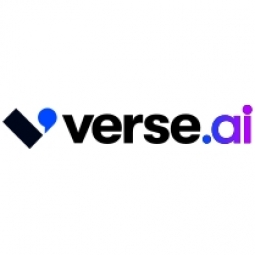
|
Verse Empowers Centriq with 24/7 Coverage and Boosts Live Lead Response Rate
Centriq Training, a leading institution in advancing IT careers under the Tek Ladder brand, was facing a significant challenge. Despite their top-tier status, they were struggling to reach out to live leads and aged inquiries due to a lack of staff and time. The inability to promptly respond to and qualify leads was a significant hurdle in their growth strategy. The situation was further complicated by the need to re-engage past student inquiries and schedule appointments for prospective students. The challenge was not only to manage the current live leads but also to rekindle interest among past inquiries and ensure a smooth appointment scheduling process.
|
|




